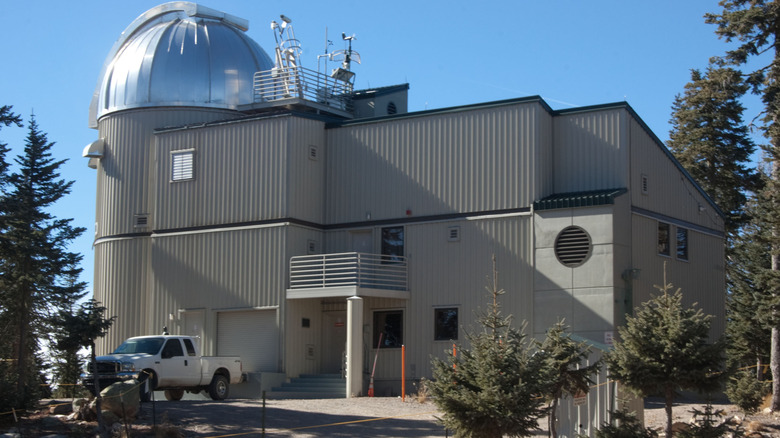The Unexpected Object The Vatican Owns In Arizona
Vatican City is a bit of a mysterious place. Ask any person what they know about the Vatican, and they'll likely give one of two answers: that it's the smallest country in the world, and that it's where the pope lives. Other than that, we generally imagine the Vatican to be a quiet micro-country that mostly keeps to itself — while helping to run the Catholic Church, of course.
So, when we picture the Vatican, we rarely associate it with "scientific advancement." In fact, due to the Vatican's quarrels with astronomers like Galileo Galilei in the 17th century, some might view the Vatican as being actively opposed to science. But that's not necessarily the case. As NPR reports, the Vatican has actually had a centuries-long interest in astronomy. In fact, in 1582, Pope Gregory XIII established the Vatican Observatory. By studying the stars, the Observatory helped the Church to reform its calendar and set the dates of numerous religious holidays.
Per the Vatican Observatory's website, the "modern" version of the Observatory began in 1891 when a large telescope dome was erected in Vatican City; from there, Vatican astronomers sought to create a detailed "map" of the stars. But, as light pollution around Rome got worse in the 1930s, the observatory was relocated to the Alban Hills, some 15 miles south of the city. In the decades since, light conditions have gotten worse still, which has led Vatican astronomers to branch out to a new location.
The Vatican owns and operates a large telescope in southeastern Arizona
This brings us to the mysterious object that the Vatican owns in Arizona, USA: a massive research telescope. Per another Vatican Observatory website, this astronomical device is called the Alice P. Lennon Telescope; it's a reflecting telescope with a mirror about six feet in diameter, which makes it very large for a telescope of its type. Together, the Alice P. Lennon Telescope and surrounding research facility are known as the Vatican Advanced Technology Telescope, or VATT.
Construction was completed on the VATT in 1993. It's located in an isolated part of southeastern Arizona several miles outside of Tucson, the nearest large city. Due to Arizona's high elevation and clear skies, the VATT is just one among dozens of telescopes located in the state; as the Vatican Observatory website reports, Arizona is "where sky conditions are among the best in the world, and certainly the Continental United States." Time on the VATT is shared between the Vatican and the University of Arizona on a 75/25 split; both institutions are also responsible for performing maintenance on the device.
Since the Vatican's Arizona-based telescope is relatively new, it's difficult to name any groundbreaking discoveries that have originated from the VATT; it mostly focuses on imaging work, which it does quite well. But, one day in the near future, you may hear about a breakthrough discovery in astrophysics that was first published by the Vatican. That'll impress Galileo ... or possibly leave him rolling in his grave.

